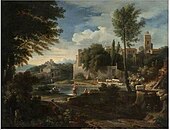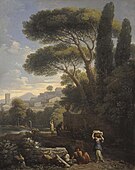
Jan Brueghelthe Elder was a Flemish painter and draughtsman. He was the son of the eminent Flemish Renaissance painter Pieter Bruegel the Elder. A close friend and frequent collaborator with Peter Paul Rubens, the two artists were the leading Flemish painters in the first three decades of the 17th century.

Caspar van Wittel or Gaspar van Wittel, known in Italian as Gaspare Vanvitelli or Gasparo degli Occhiali, was a Dutch painter and draughtsman who had a long career in Rome. He played a pivotal role in the development of the genre of topographical painting known as veduta. He is credited with turning topography into a painterly specialism in Italian art.
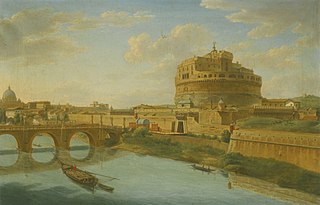
A veduta is a highly detailed, usually large-scale painting or, more often, print of a cityscape or some other vista. The painters of vedute are referred to as vedutisti.

Abraham Brueghel was a Flemish painter from the famous Brueghel family of artists. He emigrated at a young age to Italy where he played an important role in the development of the style of decorative Baroque still lifes.
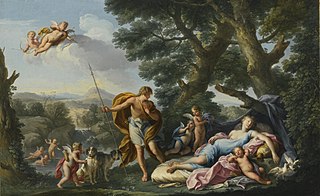
Andrea Locatelli was an Italian painter of landscapes (vedute).

Jan Miel was a Flemish painter and engraver who was active in Italy. He initially formed part of the circle of Dutch and Flemish genre painters in Rome who are referred to as the 'Bamboccianti' and were known for their scenes depicting the lower classes in Rome. He later developed away from the Bamboccianti style and painted history subjects in a classicising style.
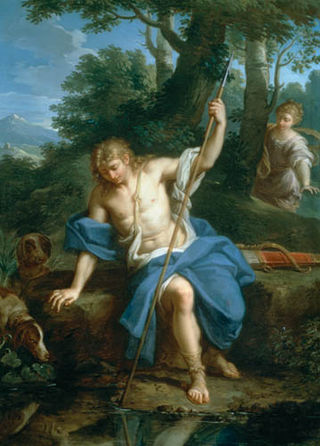
Placido Costanzi (1702–1759) was an Italian painter of the late-Baroque period.

Pieter van Bloemen, also known as Standaart, first name also spelled Peter or Peeter, was a Flemish painter, draughtsman and printmaker. He was a gifted landscape and animal artist and was very successful with his compositions depicting Italian landscapes with figures, equestrian battles, animals and genre and market scenes.
Gabriele Ricciardelli, was an Italian painter of the Baroque period, active mainly in depicting landscapes.

Pieter van Lint or Peter van Lint (1609–1690) was a Flemish painter, draughtsman and designer of tapestries. He excelled in history paintings, genre scenes and portraits in the Flemish Baroque style with some Classisizing influence. He worked in Antwerp and Italy.

Flemish Baroque painting was a style of painting in the Southern Netherlands during Spanish control in the 16th and 17th centuries. The period roughly begins when the Dutch Republic was split from the Habsburg Spain regions to the south with the Spanish recapturing of Antwerp in 1585 and goes until about 1700, when Spanish Habsburg authority ended with the death of King Charles II. Antwerp, home to the prominent artists Peter Paul Rubens, Anthony van Dyck, and Jacob Jordaens, was the artistic nexus, while other notable cities include Brussels and Ghent.

Norbert van Bloemen, called Cefalus or Cephalos, was a Flemish painter and draughtsman who worked mainly in Italy and the Dutch Republic. He is known for his Italianizing landscapes and genre scenes reminiscent of the style of the low-life paintings of the Bamboccianti. He also painted portraits and some history paintings.

Adriaen Frans Boudewijns was a Flemish landscape painter, draughtsman and etcher. He was known mainly for his landscapes with trees, Italianate landscapes with architecture, rivers and villages, city, coast and country views and architectural scenes.

Abraham Genoels II or Abraham Genouil was a Flemish Baroque painter, draughtsman, engraver and tapestry designer. He is now mainly known for his landscape paintings, drawings and prints. He had an international career that saw him work in Paris, Rome and Antwerp.
Hendrik Frans van Lint was a Flemish landscape and vedute painter who was part of the group of Flemish and Dutch painters active in Rome. He was one of the leading landscape painters in Rome in the first half of the 18th century and his patrons included Rome's old aristocratic families as well as European travellers on their Grand Tour.
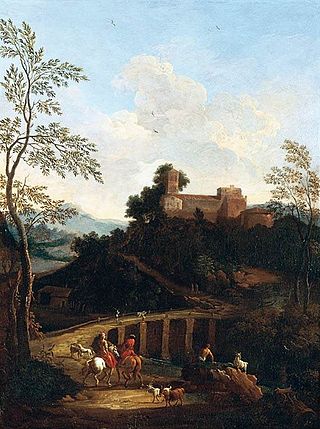
Giovanni Battista Busiri or Bussini was an Italian painter, mainly of landscapes and vedute.

Erasmus de Bie (1629–1675) was a Flemish Baroque painter known for his city views and genre scenes. He depicted several lively scenes of large public celebrations in his hometown of Antwerp. It is not clear whether the views of Italianate cities and landscapes attributed to him are the work of Adriaen de Bie, a Flemish painter from Lier who worked in Italy for a while.

Simon Johannes van Douw was a Flemish painter and draughtsman. His work ranges from Italianizing landscapes, equestrian skirmishes and battles to cattle market and hunting scenes. He worked in Antwerp, Middelburg and Rotterdam.

Alessandro Salucci was an Italian painter who played an important role in the development of the genre of cityscapes (vedute) of Rome. He created capricci, i.e. imaginary architectural perspectives and harbour views, in which the figures were often executed by another artist.
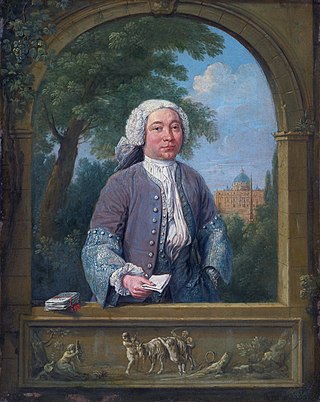
Giacomo van Lint or Jacob van Lint was an Italian landscape and vedute painter of Flemish descent active in Rome. He was the son of Hendrik Frans van Lint, one of the leading landscape painters in Rome in the first half of the 18th century. Like his father he supplied a clientele of local patrons as well as European travelers on their Grand Tour with views of the ancient and modern monuments of Rome as well as views of the Roman Campagna.



